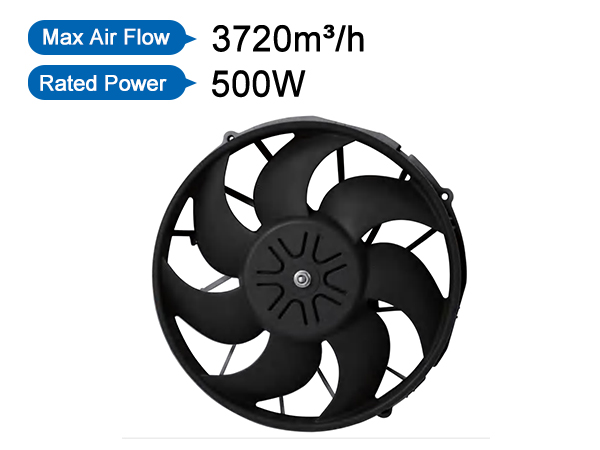Energy-saving technologies for car fans cover various aspects such as intelligent temperature control, variable frequency drive, lightweight materials and design, and aerodynamic optimization. The application of these technologies not only reduces the energy consumption of car fans but also improves the efficiency of the cooling system, promoting the green transformation and sustainable development of the automotive industry. Car fans, as an indispensable key component of the vehicle cooling system, the innovation of energy-saving technology is of great significance for improving the overall energy efficiency of the vehicle and reducing fuel consumption. This article will delve into how car fans can effectively reduce energy consumption through a series of energy-saving technologies, promoting the automotive industry to develop in a more environmentally friendly and efficient direction.

I. Intelligent Temperature Control Technology for Car Fans: Precise Regulation to Avoid Energy Waste
Traditional car fans often operate at a fixed speed, regardless of how the engine temperature changes, the fan speed remains unchanged, which to some extent leads to the waste of energy. Modern car fans generally adopt intelligent temperature control technology, which uses temperature sensors integrated in the engine cooling system to monitor the engine temperature in real-time and automatically adjust the fan speed according to the temperature changes. When the engine temperature is low, the fan speed is reduced or even stopped to save energy; when the temperature is too high, it automatically increases the speed to enhance the cooling effect. This precise regulation not only improves the cooling efficiency but also significantly reduces energy consumption.
II. Variable Frequency Drive Technology for Car Fans: Efficient and Energy-saving, Flexible Control
Variable frequency drive technology is another major tool for the energy-saving of car fans. It uses a frequency converter to adjust the input voltage and frequency of the motor, thereby achieving continuous and smooth regulation of the fan speed. Compared with traditional constant-speed fans, variable frequency fans can flexibly adjust the speed according to actual needs, avoiding unnecessary energy loss. At the same time, variable frequency drive technology can also optimize the operating efficiency of the motor, reducing the energy consumption of the motor during the start and stop process, and further improving the energy-saving effect.
III. Lightweight Materials and Design for Car Fans: Reducing Burden, Enhancing Efficiency
Lightweight is an important direction for car energy saving, and it is also applicable to car fans. By using high-strength, low-density lightweight materials (such as aluminum alloy, carbon fiber, etc.) to replace traditional steel materials, the weight of the fan can be significantly reduced while ensuring the strength and rigidity of the fan. Lightweight fans not only reduce the overall weight of the vehicle, reducing fuel consumption, but also improve the rotation efficiency of the fan itself, allowing it to achieve the ideal cooling effect at a lower power.
IV. Aerodynamics Optimization for Car Fans: Reducing Resistance, Enhancing Air Volume
The application of aerodynamic design in car fans is also an important means of energy saving. By optimizing the shape, angle of the fan blades, and the overall flow channel of the fan, the resistance of air flow can be reduced, and the air volume output efficiency of the fan can be improved. At the same time, reasonable aerodynamic design can also reduce the noise and vibration of the fan during operation, enhancing the comfort of driving and the NVH performance of the vehicle.
Address:No.30, Dapu lndustrial Street, Changping, Dongguan, Guangdong, China
Tel: +86-186 7628 8117